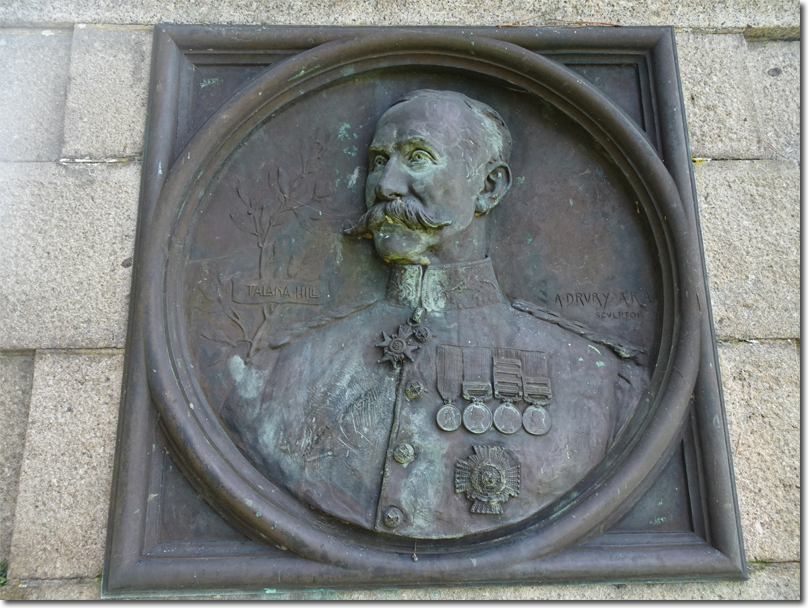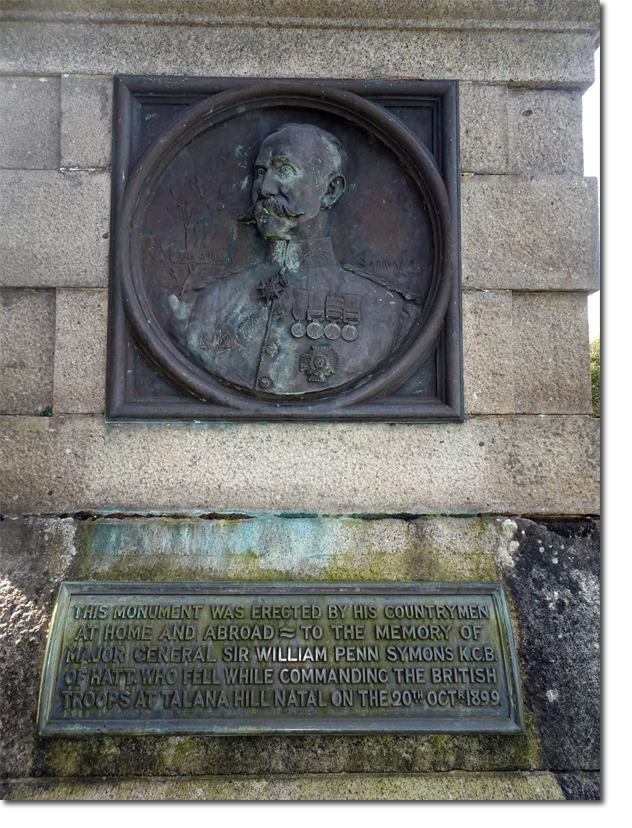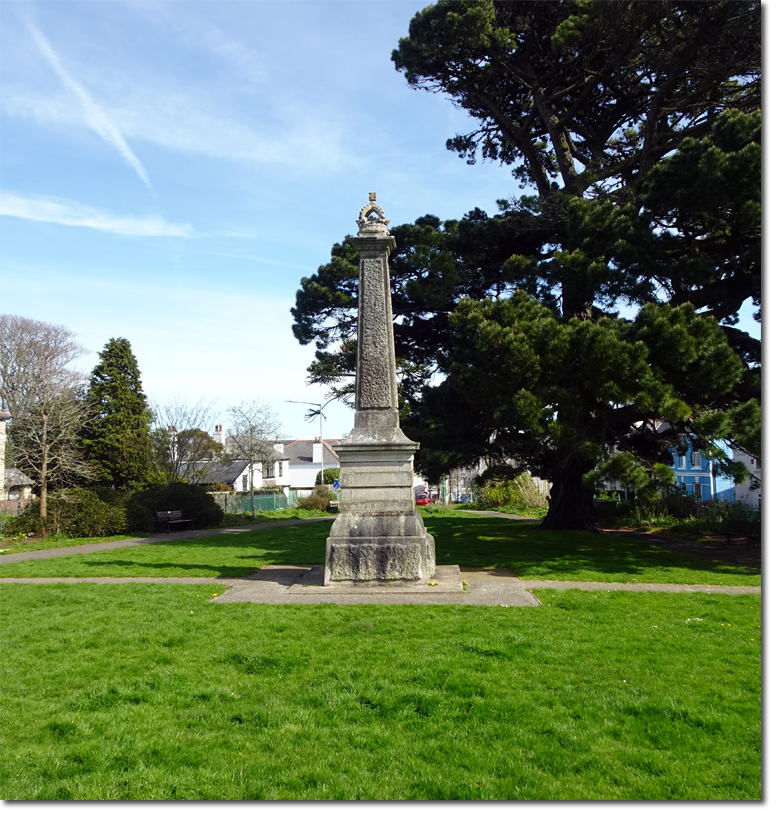|
|


|
|
Penn Symons had been a Captain in the Zulu War with the 24th Foot. Fortunately for him he had been posted with Lord Chelmsford's force which had missed the massacre at Isandlwana and the fight at Rorke's Drift involving men from his regiment. Although Captain Penn Symons arrived at Rorke's Drift on the morning of the 23rd with Chelmsford just days after the fight. He was one of the first people to talk with the defenders and jotted down their comments including such insights as:
"...they [the Zulus] repeatedly attacked the hospital. They made these attacks in the most deliberate manner. As in their dancing they stalked out of their concealment, pranced up with a high stepping action, and caring nothing for the slaughter, endeavoured to get over the barricade and into the end room of the hospital. Many times (seven or eight at least) Lt. Bromhead collected a few men together and drove them off with a bayonet charge. On being repulsed they would retire to better cover, and in a sort of chorus shout, beat their shields with their assegais. Our men cheered in response and let them have it."
He went to India with his battalion in 1880, and on 30 September 1882 was appointed assistant adjutant-general for musketry in Madras. He served on the staff in the expedition to Burma in 1885, and afterwards organized a force of mounted infantry which won special praise from Lord Roberts. In 1889 he commanded the Burma column in the Chin-Lushai expedition, and was mentioned in dispatches. He was given the brevet rank of lieutenant-colonel (17 May 1886) and of colonel (1 July 1887), and the CB (14 November 1890). On 31 January 1891 Symons was promoted regimental lieutenant-colonel, and commanded the 2nd battalion of the South Wales Borderers until 8 April 1893, when he became, by Lord Roberts's selection, assistant adjutant-general for musketry in Bengal. On 25 March 1895 he was appointed to command a second-class district in the Punjab as brigadier-general. He commanded a brigade in the Waziristan expedition of 1894–5, and in 1898 commanded a brigade in the Tochi field force, and afterwards the 1st division in the Tirah expedition. He was made KCB on 20 May 1898. William Penn Symons was to be one of the most senior British officers to be killed on the battlefield in the Victorian era as he fell in the early stages of the Boer War in 1899. On 15 May 1899 Symons was appointed to the command of the troops in Natal, then numbering about 5000 men. War with the Transvaal republic was already anticipated, and in July Symons informed the governor that an increase of 1600 men was required to defend the colony against raids, and of 5600 men to defend it against an invasion. In the autumn reinforcements larger than he had asked for came from India and the Mediterranean, and on 20 September he was given the temporary rank of major-general. Symons, a 'fire-eater', rashly sent a brigade too far forward, to Dundee, dangerously dividing the British forces. On 3 October Sir George White arrived and assumed the chief command in Natal. The Boer republics declared war on 10 October. The troops were organized as the 4th division of the South Africa field force, under Symons, who was made temporary lieutenant-general on 9 October. He was sent to Dundee, where four battalions, three batteries, and one cavalry regiment were encamped. There he was attacked on 20 October by about 4000 Boers with six guns under Lucas Meyer. These had come from the east, while two other bodies were approaching from the north and west, blocking the railway from Ladysmith. The guns of Meyer's force opened fire on the camp at daybreak from Talana Hill, 3 miles to the east of it. Symons decided to attack Meyer's force before Joubert's joined it. 'No genius—nor was he a fool', he used conventional battle tactics, including close-order infantry. He rashly sent his cavalry and mounted infantry away to cut off the enemy retreat: later, unsupported, they were forced to surrender. He led his infantry out to attack Talana Hill. Conspicuous with his red pennant carried by his aide-de-camp, Symons was shot in the stomach and mortally wounded. The hill was stormed and the Boers retreated. Two days later the British force, commanded by Major-General J. H. Yule, retreated towards Ladysmith, leaving behind at Dundee Symons and the other wounded men. Dying, Symons told the doctor, 'Tell everyone I died facing the enemy' (Pakenham, 147). He died at Dundee on 23 October 1899 and was buried on the 24th in the Anglican burial-ground there. A memorial window in Botus Fleming church, near Saltash, Cornwall, was unveiled in October 1900. William Penn Symons’ name reveals his family’s long and illustrious history. The Symons part dates all the way back to 1066 from ‘Simon, Lord of St Sever’ who came to England with William the Conqueror. The William Penn relates to his grandmother’s descent from the famous Quaker William Penn who was instrumental in setting up the states of Delaware and Pennsylvania in the Eighteenth Century (the clue is in the name of Pennsylvania). |

|

|
Empire in Your Backyard: Plymouth Article | Significant Individuals
Armed Forces | Art and Culture | Articles | Biographies | Colonies | Discussion | Glossary | Home | Library | Links | Map Room | Sources and Media | Science and Technology | Search | Student Zone | Timelines | TV & Film | Wargames